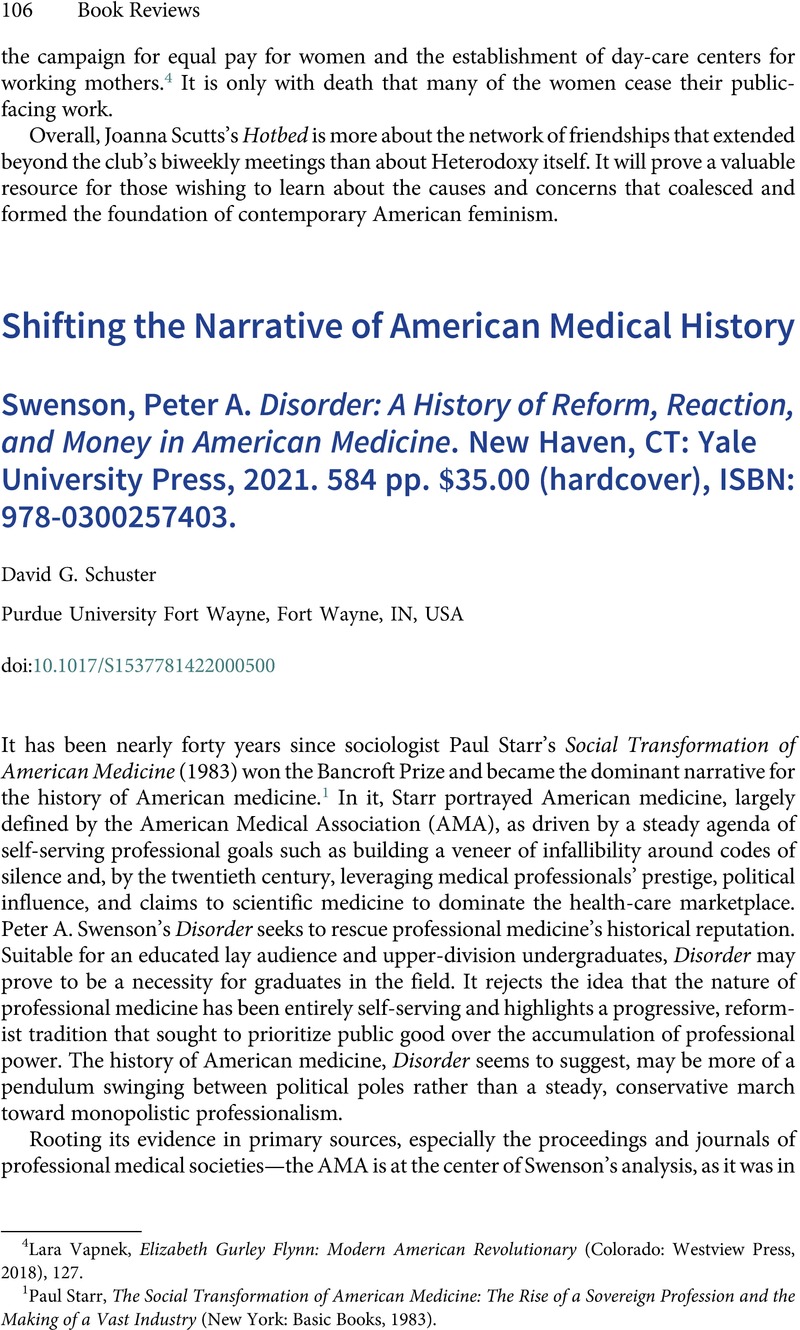No CrossRef data available.
Published online by Cambridge University Press: 06 January 2023

1 Paul Starr, The Social Transformation of American Medicine: The Rise of a Sovereign Profession and the Making of a Vast Industry (New York: Basic Books, 1983).
2 John Harley Warner, The Therapeutic Perspective: Medical Practice, Knowledge and Identity in America, 1820–1885 (Cambridge, MA: Harvard University Press, 1985); John Harley Warner, Against the Spirit of System: The French Impulse in Nineteenth-Century American Medicine (Princeton, NJ: Princeton University Press, 1998).